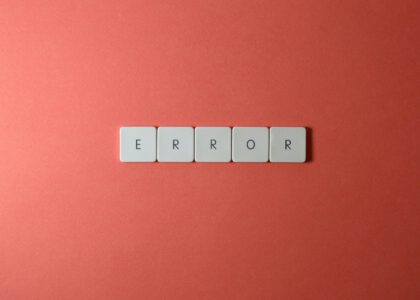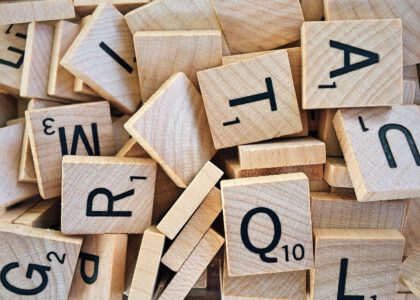Table of Contents
ToggleThe Question Everyone Asks (But Gets Wrong Answers To)
“How long will it take me to learn Spanish?” “How long does it really take to learn a language?” “Is it possible to master Mandarin in a year?”
If you’ve ever asked these questions, you’re not alone. Language learning timelines are one of the most searched topics online, yet most answers you’ll find are either overly optimistic marketing claims or discouraging generalizations that don’t account for individual differences.
The truth about how long it takes to learn a language is more nuanced than “3 months to fluency” or “10 years to mastery.” Your timeline depends on multiple factors, and understanding these can help you set realistic expectations and create an effective learning strategy.
Let’s dive into the real data, debunk common myths, and give you a realistic roadmap for your language learning journey.
The Official Numbers: What Government Data Tells Us
The U.S. Foreign Service Institute (FSI) has trained diplomats in foreign languages for decades, giving us the most comprehensive data on language learning difficulty and timelines. Their research categorizes languages based on difficulty for native English speakers:
Category I Languages (Easiest – 24-30 weeks)
- Spanish, Italian, Portuguese, French
- 600-750 class hours to reach proficiency
- Similar alphabet and grammar structures to English
- Abundant learning resources and media content
Category II Languages (Moderate – 36 weeks)
- German
- 900 class hours to reach proficiency
- More complex grammar but familiar alphabet
- Strong cognate connections with English
Category III Languages (Moderately Difficult – 44 weeks)
- Indonesian, Malaysian, Swahili
- 1,100 class hours to reach proficiency
- Different linguistic families but relatively straightforward grammar
Category IV Languages (Difficult – 44 weeks)
- Russian, Polish, Czech, Hungarian, Finnish
- 1,100 class hours to reach proficiency
- Complex grammar systems and different alphabets
Category V Languages (Extremely Difficult – 88 weeks)
- Arabic, Mandarin, Japanese, Korean
- 2,200 class hours to reach proficiency
- Completely different writing systems and grammar structures
Important Note: These numbers assume intensive, classroom-based learning with motivated adult learners. Your personal timeline will vary significantly based on factors we’ll explore below.
The Fluency Myth: What “Learning a Language” Actually Means
Before we discuss timelines, we need to address the elephant in the room: what does it mean to “know” a language?
The CEFR Framework: A Realistic Progression
The Common European Framework of Reference (CEFR) provides a more nuanced view of language proficiency:
A1 (Beginner) – 80-100 hours
- Basic phrases and simple conversations
- Can introduce yourself and ask basic questions
- Understand familiar everyday expressions
A2 (Elementary) – 180-200 hours
- Simple conversations about familiar topics
- Can describe background, immediate environment
- Handle routine tasks requiring direct information exchange
B1 (Intermediate) – 350-400 hours
- Handle most travel situations
- Describe experiences, dreams, hopes, ambitions
- Give reasons and explanations for opinions
B2 (Upper-Intermediate) – 500-600 hours
- Interact with native speakers with fluency
- Understand complex texts on concrete and abstract topics
- Produce detailed text on wide range of subjects
C1 (Advanced) – 700-800 hours
- Express ideas fluently and spontaneously
- Use language flexibly for social, academic, professional purposes
- Understand virtually everything heard or read
C2 (Mastery) – 1,000+ hours
- Near-native proficiency
- Understand everything with ease
- Express yourself spontaneously and precisely
The 7 Factors That Determine Your Personal Timeline
Your Native Language Background
Linguistic Distance Matters
If you’re a Spanish speaker learning Italian, you have a massive head start compared to learning Mandarin. Languages from the same family share:
- Similar grammar structures
- Cognate vocabulary (words with common origins)
- Familiar sound systems
- Cultural context overlap
Practical Impact: A Spanish speaker might reach B2 Italian in 200-300 hours, while the same level in Arabic could take 800-1,000 hours.
Previous Language Learning Experience
The Polyglot Advantage
Your brain becomes more efficient at language learning with each new language. Experienced learners develop:
- Better pattern recognition skills
- More effective study strategies
- Reduced language learning anxiety
- Understanding of grammar concepts across languages
Research Finding: Studies show that people who speak 3+ languages learn subsequent languages 25-40% faster than monolingual learners.
Age and Neuroplasticity
The Age Factor (It’s Not What You Think)
Contrary to popular belief, adults have several advantages over children in language learning:
- Better analytical skills for understanding grammar
- Larger vocabulary in their native language to draw connections
- More developed metacognitive strategies
- Greater motivation and focus
The Real Age Effect: While children may have advantages in pronunciation and intuitive grammar acquisition, adults can achieve fluency faster through focused, strategic learning.
Learning Method and Quality
Not All Study Hours Are Equal
One hour of conversation practice isn’t equivalent to one hour of grammar exercises. Effective methods include:
- Active conversation practice (highest impact)
- Comprehensible input (reading/listening at appropriate level)
- Spaced repetition for vocabulary
- Immersive experiences (travel, media consumption)
Time Multiplier Effect: High-quality, varied learning methods can reduce your timeline by 30-50% compared to traditional classroom-only approaches.
Motivation and Consistency
The Consistency Compound Effect
30 minutes daily for a year (182 hours) is more effective than 3-hour weekend sessions totaling the same time. Consistent exposure helps with:
- Long-term memory consolidation
- Habit formation
- Reduced forgetting between sessions
- Steady progress momentum
Motivation Types That Matter:
- Integrative motivation (wanting to connect with the culture)
- Instrumental motivation (career/academic goals)
- Intrinsic motivation (personal satisfaction and growth)
Immersion Opportunities
The Immersion Accelerator
Living in a country where your target language is spoken can dramatically reduce learning time, but only if you actively engage with the language. Passive immersion (living abroad but speaking your native language) provides minimal benefits.
Effective Immersion Strategies:
- Force yourself into situations requiring the target language
- Consume local media and entertainment
- Build relationships with native speakers
- Avoid expat communities that speak your native language
Individual Learning Style and Aptitude
Language Learning Aptitude
Some people do have natural advantages in language learning, including:
- Better phonetic coding ability (hearing and reproducing sounds)
- Stronger pattern recognition skills
- Superior working memory capacity
- Higher tolerance for ambiguity
Learning Style Optimization:
- Visual learners: Use flashcards, mind maps, written materials
- Auditory learners: Focus on podcasts, music, conversation
- Kinesthetic learners: Use gestures, movement, hands-on activities
Realistic Timelines for Different Goals
Conversational Fluency (B1-B2 Level)
Category I Languages (Spanish, French, Italian):
- Intensive study (2-3 hours daily): 6-12 months
- Regular study (1 hour daily): 12-18 months
- Casual study (30 minutes daily): 18-24 months
Category V Languages (Mandarin, Arabic, Japanese):
- Intensive study (2-3 hours daily): 18-24 months
- Regular study (1 hour daily): 2-3 years
- Casual study (30 minutes daily): 3-4 years
Professional Proficiency (C1 Level)
Category I Languages:
- Intensive study: 12-18 months
- Regular study: 2-3 years
- Casual study: 3-4 years
Category V Languages:
- Intensive study: 2-3 years
- Regular study: 4-5 years
- Casual study: 5-7 years
Near-Native Mastery (C2 Level)
This level typically requires:
- Extended immersion experience
- Formal education in the language
- Professional or academic use
- 5-10+ years of consistent engagement
The Plateau Problem: Why Progress Seems to Stop
Most language learners experience frustrating plateaus, especially around the intermediate level (B1-B2). Understanding why this happens can help you push through:
The Intermediate Plateau Causes:
- Comfort zone trap: You can communicate basic needs, so motivation decreases
- Complexity increase: Grammar and vocabulary become more nuanced
- Reduced novelty: The excitement of early progress fades
- Method stagnation: Using the same learning approaches that worked for beginners
Breaking Through Plateaus:
- Change your learning methods every 3-4 months
- Increase challenge level with more complex materials
- Focus on weak skills (usually speaking or listening)
- Set specific, measurable goals beyond “getting better”
- Find new motivation sources (new interests, goals, communities)
The Fast-Track Strategies That Actually Work
1. The 80/20 Approach
Focus on the 20% of vocabulary and grammar that covers 80% of daily communication:
- Learn the 1,000 most common words first
- Master basic sentence structures
- Focus on high-frequency phrases and expressions
2. Comprehensible Input Method
- Start with content slightly above your level
- Use context clues to understand new elements
- Gradually increase difficulty as comprehension improves
- Prioritize understanding over perfect production initially
3. The Conversation-First Strategy
- Start speaking from day one, even with limited vocabulary
- Use language exchange apps and conversation partners
- Practice thinking in the target language
- Don’t worry about perfect grammar initially
4. Immersion Simulation
Create an immersive environment at home:
- Change your phone/computer language settings
- Watch TV shows and movies with target language audio
- Listen to podcasts and music in the target language
- Follow social media accounts in the target language
5. The Habit Stack Method
Attach language learning to existing habits:
- Listen to podcasts during commute
- Review flashcards while drinking morning coffee
- Practice speaking while exercising
- Read in target language before bed
Common Timeline Mistakes That Slow You Down
1. The Perfectionist Trap
Waiting until you’re “ready” to speak or write perfectly prevents you from getting essential practice. Embrace mistakes as learning opportunities.
2. The Grammar-First Fallacy
Spending months on grammar rules before attempting communication is inefficient. Learn grammar in context through use, not isolation.
3. The App-Only Approach
While language learning apps are convenient, they can’t provide everything you need. Supplement with real conversation, authentic materials, and varied practice.
4. The Motivation Rollercoaster
Relying solely on motivation leads to inconsistent practice. Build systems and habits that work even when motivation is low.
5. The Comparison Game
Everyone’s language learning journey is unique. Comparing your progress to others can be demotivating and counterproductive.
Setting Realistic Expectations for Your Journey
Month 1-3: Foundation Building
- Learn basic greetings and essential phrases
- Understand simple sentence structures
- Build core vocabulary (300-500 words)
- Develop listening skills with simple content
Month 4-6: Communication Breakthrough
- Have basic conversations about familiar topics
- Understand main ideas in simple texts
- Express basic needs and preferences
- Vocabulary expands to 800-1,200 words
Month 7-12: Intermediate Development
- Discuss past and future events
- Understand longer conversations and texts
- Express opinions and give explanations
- Vocabulary reaches 1,500-2,500 words
Year 2+: Advanced Refinement
- Handle complex topics and abstract concepts
- Understand native-speed speech and authentic materials
- Express nuanced ideas and emotions
- Continue expanding vocabulary and cultural understanding
The Bottom Line: Your Personal Timeline
The honest answer to “How long does it take to learn a language?” is: It depends.
However, with realistic expectations and effective methods, here are reasonable timelines for conversational fluency (B2 level):
- Easy languages (Spanish, Italian, French): 12-18 months with consistent daily practice
- Moderate languages (German, Russian): 18-24 months with consistent daily practice
- Difficult languages (Mandarin, Arabic, Japanese): 2-3 years with consistent daily practice
Remember: These timelines assume:
- 1-2 hours of focused daily practice
- Use of effective, varied learning methods
- Regular conversation practice
- Consistent motivation and effort
Your Next Steps: Creating Your Personal Timeline
- Assess your starting point: Take a placement test to understand your current level
- Define your goals: Be specific about what “fluency” means to you
- Choose your methods: Select 2-3 complementary learning approaches
- Create a schedule: Plan realistic daily practice time
- Track your progress: Use milestones to stay motivated
- Adjust as needed: Be flexible and modify your approach based on what works
Language learning is a marathon, not a sprint. The key to success isn’t finding the fastest method—it’s finding sustainable approaches that you can maintain consistently over time.
Your fluency timeline starts now. The question isn’t whether you can learn a language, but how committed you are to the journey. With realistic expectations, effective methods, and consistent effort, you’ll be amazed at how much progress you can make in just one year.





